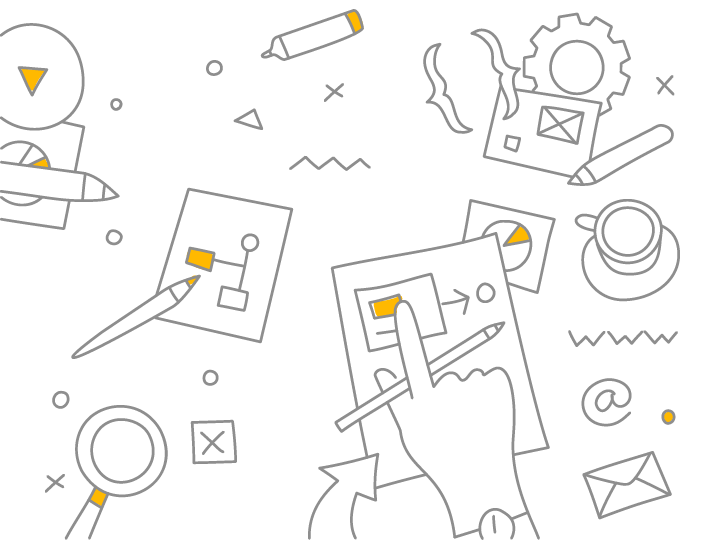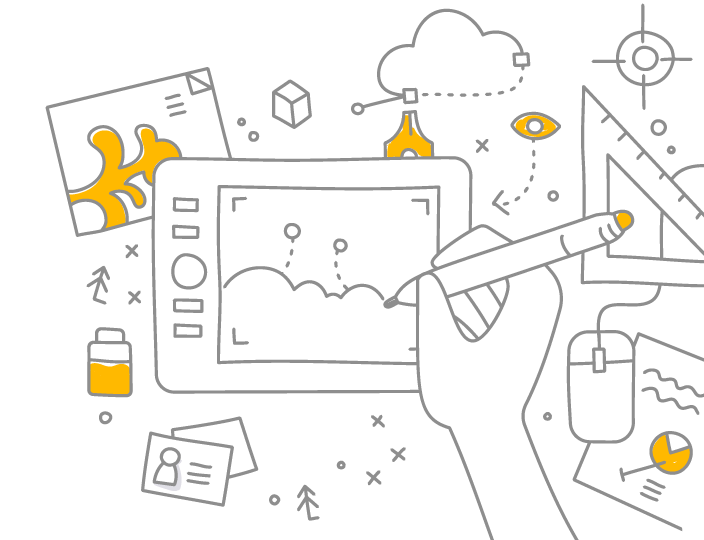LOGO DESIGNER
What is logo design?
Logo design is a specialized area within graphic design that focuses on creating unique and distinctive visual symbols, known as logos, for businesses, organizations, or individuals. A logo serves as the visual representation of a brand or company and plays a vital role in establishing its identity and recognition.
Logo designers typically work closely with clients to understand their brand values, target audience, and desired message. Based on this information, they conceptualize, sketch, and refine ideas to create a logo design that effectively communicates the essence of the brand.
Logo design involves combining various design elements such as typography, colors, shapes, and imagery to create a visually appealing and memorable logo. The design should be scalable, meaning it can be resized without losing its visual impact, and versatile enough to be used across different platforms and mediums.
A successful logo design should be distinctive, relevant, and memorable, leaving a lasting impression on viewers and helping to differentiate the brand from its competitors. It should effectively capture the brand's personality, values, and objectives, while also resonating with the target audience.
Logo designers utilize design software such as Adobe Illustrator or CorelDRAW to create vector-based designs that can be easily scaled and modified. They also consider factors such as color psychology, visual hierarchy, and composition to create visually balanced and impactful logos.
Overall, logo design is a specialized field that requires a combination of creativity, visual communication skills, and a deep understanding of branding principles to create effective and visually appealing logos.
LOGO DESIGNER
What do logo designers do?
Logo designers are responsible for creating unique and visually appealing logos that represent a brand, business, organization, or individual. Here are the primary tasks and responsibilities of logo designers:
Understanding client requirements: Logo designers work closely with clients to gather information about their brand, target audience, values, and desired message. They conduct discussions, interviews, and research to gain a comprehensive understanding of the client's vision and goals.
Conceptualizing and sketching ideas: Based on the client's requirements and research, logo designers brainstorm and generate initial ideas for the logo design. They often sketch rough concepts on paper to explore different visual possibilities and compositions.
Creating digital designs: Logo designers use design software such as Adobe Illustrator or CorelDRAW to translate their sketched ideas into digital designs. They work with typography, shapes, colors, and other graphic elements to create visually balanced and aesthetically pleasing logos.
Refining and iterating designs: Logo designers collaborate with clients, taking their feedback and suggestions into account. They refine and iterate the logo designs based on client input, making adjustments to typography, color choices, layouts, and other design elements to ensure the final logo meets the client's expectations.
Providing multiple variations and formats: Logo designers often create different variations of the logo, such as horizontal and vertical orientations, color and grayscale versions, and versions suitable for different backgrounds. They also provide the logo in various file formats, such as vector files (e.g., SVG, EPS) and raster files (e.g., PNG, JPEG), ensuring the logo can be used across different mediums and applications.
Delivering the final logo: Once the logo design is approved, logo designers package and deliver the final logo files to the client. They provide guidelines on how to use the logo correctly, including specifications for sizing, clear space, and color usage. In some cases, logo designers may also assist with the implementation of the logo on different materials or platforms.
Throughout the process, logo designers need to be attentive to detail, have a strong sense of aesthetics, and possess good communication skills to effectively collaborate with clients and bring their vision to life.
LOGO DESIGNER
How much do logo designers make?
The salary of a logo designer can vary depending on several factors such as their level of experience, location, skill level, the size of the company they work for, and whether they are freelancers or employed by a design agency. Additionally, the demand for logo designers and prevailing market rates can also influence their earnings.
As of my knowledge cutoff in September 2021, the average salary range for logo designers in the United States was approximately $40,000 to $80,000 per year. However, it's important to note that these figures are just averages, and individual earnings can be higher or lower based on the factors mentioned earlier.
Freelance logo designers often charge an hourly rate or a flat fee per project, which can range from $5 to several thousand dollars or more, depending on their expertise, reputation, and the complexity of the project. Some experienced and in-demand logo designers will command even higher rates.
It's worth mentioning that these figures can change over time due to market fluctuations and other factors. It's always recommended to research the current industry standards and market rates in your specific location or region for the most accurate and up-to-date information on logo designers' earnings.
LOGO DESIGNER
How Do I Become A Logo Designer?
To become a logo designer, follow these steps:
Develop your design skills: Start by honing your artistic and creative abilities. Learn the principles of design, color theory, typography, and composition. Practice sketching, drawing, and working with design software like Adobe Illustrator or CorelDRAW.
Obtain a relevant education: While a formal education is not always required, it can provide a strong foundation and enhance your skills. Consider pursuing a degree in graphic design, visual communication, or a related field. Many colleges, universities, and design schools offer programs tailored to aspiring logo designers.
Build a portfolio: As you develop your design skills, create a portfolio that showcases your best logo designs and other relevant design work. Your portfolio should demonstrate your creativity, technical skills, and ability to translate ideas into visually appealing designs.
Gain practical experience: Seek opportunities to work on real-world projects, such as internships, freelance work, or collaborations. This practical experience will help you understand client requirements, work under deadlines, and refine your design process.
Stay updated and inspired: Keep up with current design trends, industry news, and emerging techniques. Follow design blogs, attend design conferences or workshops, and study the work of successful logo designers. Continuous learning and staying inspired will help you develop your unique style and stay competitive in the field.
Network and promote yourself: Build connections within the design community and industry. Attend design events, join professional organizations, and engage with fellow designers online. Create a professional website or online portfolio to showcase your work and make it easy for potential clients to find and contact you.
Provide excellent client service: As a logo designer, good communication and understanding your clients' needs are essential. Develop strong client management skills, listen to feedback, and be willing to revise and refine your designs based on client input.
Remember that becoming a successful logo designer takes time, practice, and dedication. It's a creative field that requires constant learning and staying updated with design trends.
LOGO DESIGNER
Where to find logo design courses?
There are several platforms and resources where you can find logo design courses to enhance your skills and knowledge. Here are some popular options:
Online learning platforms: Websites like Udemy, Coursera, Skillshare, and LinkedIn Learning offer a wide range of logo design courses taught by industry professionals. These platforms often provide both free and paid courses, allowing you to choose based on your budget and learning preferences.
Design schools and institutions: Many design schools and institutions offer logo design courses as part of their curriculum. Research local colleges or universities in your area that offer graphic design programs or short-term courses focused specifically on logo design.
Design conferences and workshops: Attend design conferences, workshops, and seminars, both online and offline, as they often feature sessions and tutorials on logo design. These events provide opportunities to learn from experienced designers and network with professionals in the industry.
Professional design associations: Joining design associations such as AIGA (American Institute of Graphic Arts) or D&AD (Design and Art Direction) can grant you access to resources, events, and workshops that focus on logo design. These associations often have online platforms with educational content.
Design blogs and tutorials: Many graphic design blogs and websites provide free tutorials, tips, and resources on logo design. Some popular design blogs include Smashing Magazine, Creative Bloq, and Designmodo. Explore their archives for logo design-related articles and tutorials.
Local design meetups: Check if there are local design meetups or design communities in your area. These gatherings often feature workshops, talks, and skill-sharing sessions, where you can learn from fellow designers and industry experts.
Remember to review the course syllabus, instructor qualifications, and student reviews when choosing a logo design course. Look for courses that cover topics like design principles, logo conceptualization, typography, color theory, and software skills. Practical exercises and hands-on projects are valuable for gaining real-world experience.
By exploring these platforms and resources, you can find logo design courses that suit your learning style, budget, and level of expertise.
LOGO DESIGNER
Interested in more links
elementor.com // shopify.com // hubspot.com // 99designs.com // creativebloq.com // wix.com // youtube.com


